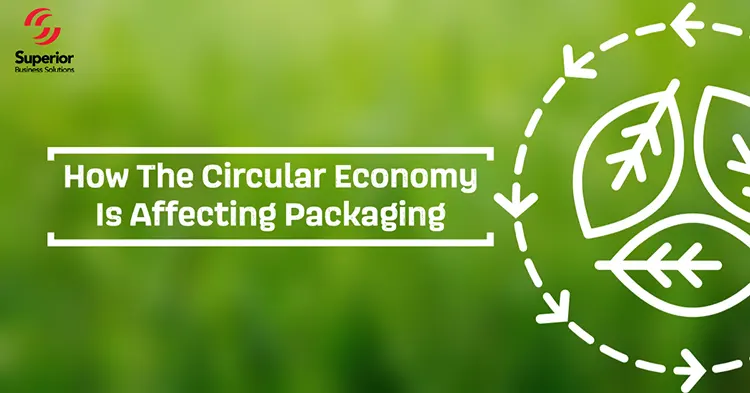Today’s Products Come Wrapped in Environmental Friendliness
Today, I’d like to focus on one of our products that I don’t talk about often. And it’s the one that can make your products more environmentally friendly and more appealing to consumers who care about the future of our planet. It’s the packaging.
We have the ability to create virtually every kind of package.
Fast Company published an article that really caught my attention. It talks about seven ways the packaging industry is moving quickly in the direction of more eco-friendly reusable packaging materials and earth-friendly practices.
7 Ways Companies Will “Go Green” With Their Packaging in 2021
You see “trend” articles all the time. But this one identified seven distinct tactics that will continue to grow this year. Each of them will have a measurable impact in eliminating waste related to the packaging of consumer (and B2B) products.
Equally important, each will make a meaningful and welcome statement to customers. And make no mistake, it is no longer a “fringe group” of consumers who are concerned, and make buying decisions based upon, eco-responsible actions.
Let’s look at the factors identified in the article.
-
Reusable Packaging
We’ve become accustomed to “throw-away” product containers, but that’s changing in some surprising ways. You’ve seen cleaning products (many sold online) that offer powder or tablet refills designed so consumers just add water and reuse the original container.
Some of our biggest brand names are offering their products in reusable containers—and not the ones you might expect. Deodorants? Ice cream? Make your containers appealing (almost collectible) and it can work for almost anything.
-
Plastic- Less Wasteful, and Less OF It
Reports say that in fewer than 20 years, the amount of plastic entering the ocean could triple if nothing changes. Here are the ways companies will react to help change that outlook.
The use of plastic for packaging will diminish, as fewer items are individually wrapped and things like six-pack rings are eliminated by many brands. And remaining plastic packaging will be made easier to recycle.
Example: no individual labels on bottles of water.
-
Products Returned to Companies After Use
More companies will take an active role in the resale marketplace, for example Levi’s or Patagonia taking back your apparel to refurbish and offer for second-hand purchase.
Ikea intends to be totally “circular” by the end of the decade.
This may have some implications for original packaging. But it will certainly help counter our “throw-away” mentality.
-
Business Climate Embraces Making Smaller Footprint
According to the article, 45% of greenhouse gas emissions come from the way that we make and use products and manage land. So more companies are shifting to renewable energy.
Adopting forward-thinking policies like the “buy-back” strategy above certainly helps. Refurbishing existing products has far less impact on climate than making new ones.
-
New Government Policies
Lawmakers on all levels have already begun enacting bans and restrictions that move in an eco-friendly direction.
In Canada, for example, single-use plastic items like forks, straws, bags and six-pack rings will be banned by the end of this year.
It is smart to get ahead of this trend and rethink packaging with those laws on the horizon. Here again, eco-friendly reusable packaging will earn support from your customers.
Other environmentally friendly practices may soon earn tax breaks, as well, as governments try to incentivize such actions.
-
Companies Track Progress
Accountability is on the rise when it comes to green practices. Certainly, consumers are watching. But increasingly so are corporate boards and shareholders.
Several councils and foundations have developed tools to help businesses make wise decisions in this regard.
We at Superior can help you analyze your packaging practices and see how you might take steps to eliminate waste and build sustainability.
-
Designers Step Up
Many decisions affecting a product’s ultimate “green” rating are made at the design stage. For both product and packaging, small decisions about materials and construction can have a huge impact on whether a product can be circular or is locked into the “take, make, waste” linear model that has brought us to this point.
Rather than a complication, designers will see this as an opportunity to have a big impact on helping solve the world’s problems.
They are creating things for long, successful life rather than an unceremonious future in a landfill.
Things You Can Do Right Now
Clearly, if you sell a packaged product, it is time to investigate options that will live comfortably in and contribute to the circular economy.
But for starters, you can make choices that help eliminate waste in your daily operations, and in the promotional items you pass out at events, customer appointments and more.
Our sister company offers, for example, the best reusable bags for food delivery and grocery shopping. Their Ecolife insulated tote keeps hot items hot and cold items cold. It’s an item that is in stock and can be customized with your branding for use as a promo item.
Think how many plastic bags your company can remove from the waste chain simply by making this decision.
The Best Thing to Do Right Now
Call us, of course.
We understand packaging and are able to help you steer through the regulations and the “right thing to do” questions. Our ISO certification will guide both us and you in making the right decision for your situation.
Our decisions produce positive results for our customers. That’s why we’ve earned four consecutive Best of Print and Digital awards – only because those customers have given us excellent reviews when asked by an independent research firm. (And stay tuned for that “four” number to change very soon!)
You Have a “Green” Light to Call Us
Contact Superior or reach out to your Superior sales rep and ask for help creating reusable packaging for the future, circular economy.
The circular economy is coming around fast. We’ll help you be ready. It’s what we do. Why do you think so many of our customers “re-use” us?



